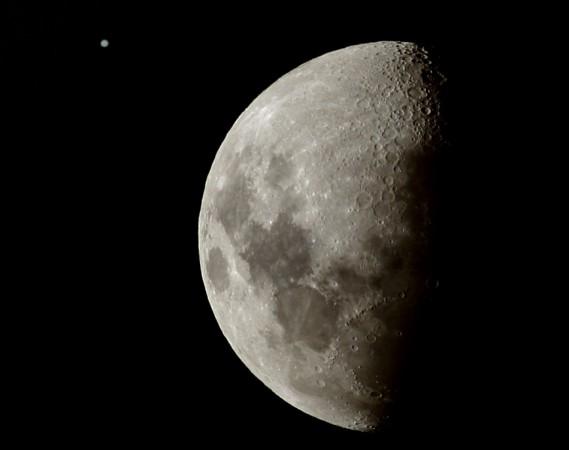
Astronomers have detected the presence of water vapour and carbon monoxide in the glowing atmosphere of a giant alien exoplanet, which may offer clues about how the Earth was formed.
The exoplanet known as HR8799c orbits around the star HR 8799, which is located at a distance of 130 light-years from Earth. The 30 million-year-old star is orbited by four planets that are much larger than any planet found in the Earth's solar system. The planets weigh between five to 10 times the mass of Jupiter and are glowing with the heat generated during their formation, reported Space.com.
Scientists were able to see the planetary system of HR 8799 directly by picking up light from the planets orbiting the glowing star. They revealed that the HR 8799 system looks like a scaled-up version of our solar system, suggesting that it might host smaller Earth-sized planets closer in.
The research team concentrated on HR 8799c, a gas giant orbiting far away from their parent star. The size of this planet is seven times the mass of Jupiter. They used OSIRIS, a high-resolution imaging spectrograph, on the Keck II telescope in Hawaii to make a detailed analysis of HR 8799c's atmosphere.
The spectrograph helped in producing a chemical fingerprint to determine which chemicals were present in the exoplanet's atmosphere. Based on the analysis, researchers confirmed the presence of water vapour and carbon monoxide in its atmosphere. However, it was devoid of methane, a potential sign of life. HR8799c could not support life as the planet is very hot with a surface temperature of 1,000 degrees Celsius.
The same method could be used to study atmosphere of Earth-like planets for signs of life, said the researchers. They said that the data from OSIRIS might also shed light on how the planetary system was formed.
Two scenarios have been proposed for the formation of planets - core-accretion scenario and gravitational-instability scenario. In core-accretion scenario, planets are formed gradually as the rocky core grows massive enough to accumulate a gaseous envelope. This model is the most commonly accepted mechanism in the formation of Jupiter-like large planets.
In case of the gravitational-instability scenario, planets are formed instantly from gravitationally unstable massive gas disks. A comparison between the amounts of carbon to the amounts of oxygen present in the planet's atmosphere could provide clues as to how the entire planetary system was formed. Based on the new measurements, researchers found that the atmosphere of HR8799c has a high ratio of carbon to oxygen, suggesting that the planet was formed through the core accretion model.
Earth's solar system was also said to be formed via core accretion. Researchers are further planning to study the super-sized planets to understand their nature and their atmospheres. "These future observations will tell us much more about the planets in this system," Quinn Konopacky, of the Dunlap Institute for Astronomy & Astrophysics, University of Toronto, said in a statement. "And the more we learn about this distant planetary system, the more we learn about our own."
The details of the findings are published in the journal Science.







![Raha turns 2: Alia Bhatt -Ranbir Kapoor host jungle themed birthday party for daughter, Kareena Kapoor, Rani Mukerji, Pooja Bhatt, Karan Johar attend [Pics]](https://data1.ibtimes.co.in/en/full/805705/raha-turns-2-alia-bhatt-ranbir-kapoor-host-jungle-themed-birthday-party-daughter-kareena.jpg?w=220&h=138)
!['If I am upset, anxious, I confide in someone': Shreyas Talpade talks about mental health awareness and depression [Exclusive]](https://data1.ibtimes.co.in/en/full/805704/if-i-am-upset-anxious-i-confide-someone-shreyas-talpade-talks-about-mental-health-awareness.jpg?w=220&h=138)



